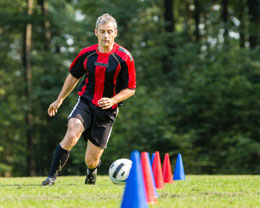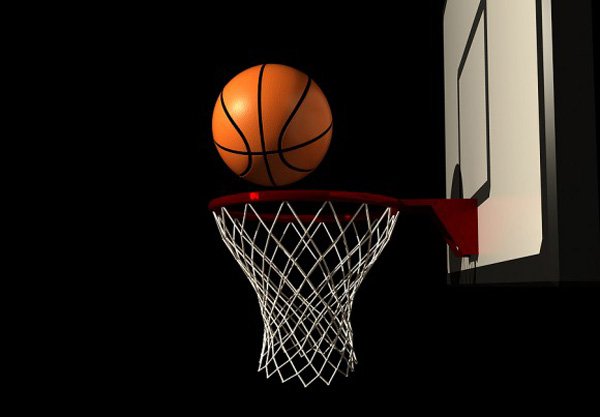Soccer is a sport that requires physical strength and endurance in addition to the technical skills. Plyometric exercises help in increasing strength and stamina.

Soccer is a sport that is played on a large ground, with players taking very little rest during the game. It has been estimated that players cover 8-12 kms during a match, during which they jog, sprint, walk, move backwards and also move whilst in possession of the ball. It sure can be tiring! Strength training increases muscle and body strength, corrects muscle imbalances, and prevents injuries.
Plyometrics
In 1975, American track and field coach Fred Wilt coined the term plyometrics, combining two Latin words
pilo, which means more, and
metrics, meaning to measure. It is a form of exercise that produces fast and powerful muscle movements. It is designed to optimize contractions of the muscles at the highest speed possible, and aims to improve performance. Following are some exercises that make use of muscle elasticity, strength, and innervations, which in turn enables the player to jump higher, hit harder, or throw farther.
Lower Body Plyometric Exercises
Split Squat Jumps: Stand with feet apart, and take the left leg and step back approximately 2 feet standing on the ball of back foot. Your feet should be positioned in such a way that the head and back are in an erect and straight position. Lower the body by bending at right knee until thigh is parallel to floor then immediately jump back. Switch feet in the air so that the front foot lands backward and vice versa.
Tuck Jumps: Stand with your feet apart, and the knees slightly bent, with arms flung at sides. Jump up, bringing knees close to the chest. Land on balls of feet and repeat at once. Each time you jump, reduce ground contact time, springing into air immediately.
Bounding: This exercise is in a running motion, that focuses more on foot push-off and reduced air time. Start by jogging in a forward momentum. After a few feet of jogging, forcefully push off with the left foot and bring the leg forward, and simultaneously bring the right arm forward. Repeat with other right leg and left arm.
Upper Body Plyometric Drills
Plyometric Push-Ups: Get into a push-up position, lower yourself to the ground and then forcefully push yourself up so that your hands immediately leave the ground. Break your fall with your hands and lower yourself into a push-up again and repeat with force.
Overhead Throws: Stand with one foot in front, and knees slightly bent. Pull the ball back behind the head and forcefully throw forward as far as possible (preferably onto a wall). Catch ball as it bounces towards you, and keep repeating. The time taken between pulling the ball back and starting the throw should be reduced with every action.
Explosive Start Throws: Stand with feet slightly apart, and bend the knees slightly. Lift ball up to chest level. Quickly run forward and throw the ball straight out as far and fast as you can. At the same time you throw the ball forcefully, explode forward in a sprint.
Basic Plyometric Exercises
- Placing feet together, hop side to side, forward and backwards.
- Skip for distance and height, try being suspended in the air for a longer time.
- While jumping pull your legs up into your body.
- Run up and down the stairs, really fast. Hop and skip a few steps alternatively. But be careful, you don't want to trip!
- Jump as high as you can, and land straight on your feet every time you do so.
- Jump on and off a sturdy platform, initially start with higher elevations, and then move on to a smaller platform.
- Jump over alternatively using the left and right foot. Follow-up with jumps over the ball from front to back.
It's important to warm up with light aerobic activity followed by some stretching exercises. Though these drills don't tire one out, it is imperative to take breaks and stick to the prescribed program. All these exercises and drills require professional advice and coaching, so make sure you get it before you embark on a plyometric fitness regime.
 Soccer is a sport that is played on a large ground, with players taking very little rest during the game. It has been estimated that players cover 8-12 kms during a match, during which they jog, sprint, walk, move backwards and also move whilst in possession of the ball. It sure can be tiring! Strength training increases muscle and body strength, corrects muscle imbalances, and prevents injuries.
Soccer is a sport that is played on a large ground, with players taking very little rest during the game. It has been estimated that players cover 8-12 kms during a match, during which they jog, sprint, walk, move backwards and also move whilst in possession of the ball. It sure can be tiring! Strength training increases muscle and body strength, corrects muscle imbalances, and prevents injuries.

